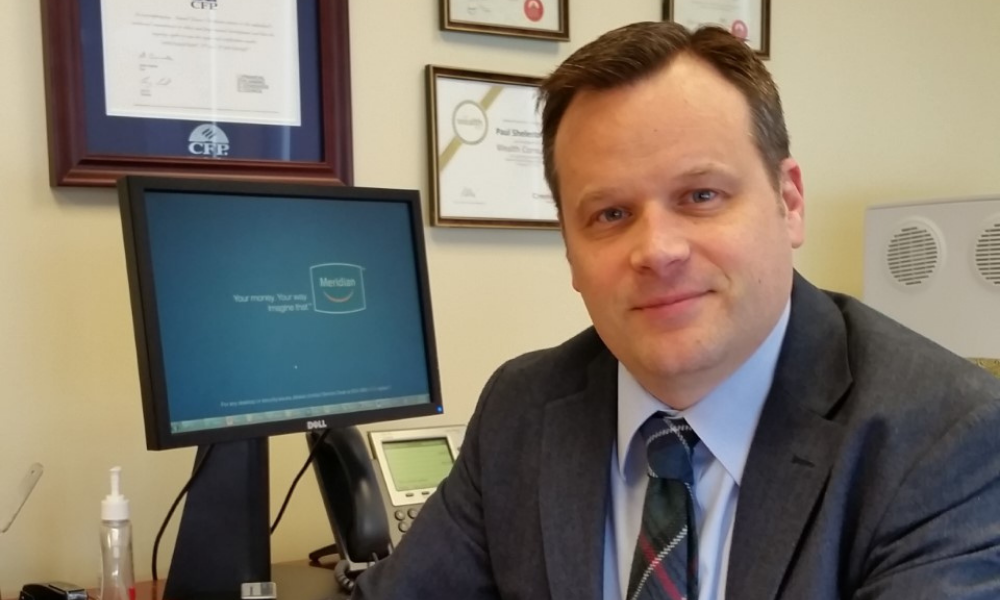Meridian wealth advisor highlights need to balance asset location and allocation in long-term financial planning

For the vast majority of Canadians, maximizing their RRSP contributions from year to year is a no-brainer. But according to Paul Shelestowsky, there’s a downside to following that conventional wisdom too closely.
“When I talk to my members, I tell them that is there is such a thing as too much money in RRSPs,” Shelestowsky, senior wealth advisor at Meridian Credit Union, told Wealth Professional.
His advice is informed by personal experience. His mother passed away at age 58, leaving all her RRSP assets to his father; when the father unfortunately died two years later, half of the RRSP money went to the government. Because they had not lived to ripe old ages, they didn’t have the time most people need to transition from retirement planning to estate planning.
“When I plan with my members, I don’t just look at how much money they have left to live on,” Shelestowsky said. “You might want to pass on a significant amount of wealth, in which case moving some assets to a TFSA or a joint non-registered account, from which assets are more easily transferred to future generations, can make a lot of sense.”
To account for longevity risk, he said, his financial plans consider clients’ income requirements going up to age 90. But at the same time, he wants to minimize the tax exposure of their estate, which means moving the planning conversation beyond asset allocation and into the realm of asset location.
“I have people who feel that they have too much money, so they’d rather gift some of it or spend more of it during early retirement than think about the tax liability of their estate. At that point, we do the math to see what that does to their long-term income,” he said. “When we determine they can safely expect to have enough income to age 90, I ask ‘what happens if you were to pass on at age 75?’ At that point, we figure out what’s subject to probate, what can go to their estate tax-free, and whether the client would be ok with those outcomes.”
Deciding to move assets to a different location, he stressed, should not come at the cost of jeopardizing the client’s net worth. A 65-year-old client who has a pension through CPP or OAS, for example, might want to move $100,000 from their RRSP or RRIF into their TFSA. But they have to consider the tax friction involved: try to move that amount in a single year, and 40% of it will be lost to taxes, while moving $10,000 yearly over 10 years means losing just 20%.
“I do a lot of work with clients who are retired, and they’ll wonder why we’re showing money coming out of their RRIFs instead of non-registered accounts, which would be non-taxable transactions,” he said. “I tell them that in a perfect world, you’d want your estate to be entirely in non-registered and TFSA money when you die. But because we don’t know when that will happen, you also want to hedge against the risk of your passing away early and potentially not fully depleting your RRSP or RRIF.”
Conversely, Shelestowsky said, it’s important to not just accept a client’s instruction to add to their RRSPs out of hand. A $10,000 RRSP contribution might make perfect sense for clients with income on the order of $200,000 a year. But advisors should have more questions for those making $40,000, such as whether they’ve maxed out their TFSA, or if they have a joint non-registered account with their spouse where they can still make contributions.
“We’ve learned to ask a lot of these questions over time,” he said. “I remember in the ‘90s when I was doing RRSPs, and we didn’t have TFSAs yet. We’d have cases where a retiree teacher had built up $300,000 in their RRSPs over the years, and they’re getting $60,000 from their pension, $10,000 from their CPP, and $5,000 from OAS, which put their gross income at $75,000.”
As Shelestowsky explained, the difficulties for those clients start at age 71, when they are obligated to convert their RRSPs to RRIFs and start taking money out. The inevitable upshot, he said, is that they would trigger OAS clawbacks as they cross the $75,000 threshold. And because teachers generally have relatively low salaries, their income at retirement would be on par with the income they received during their working years, which means they’d effectively be giving even more of their money to the government.
“Things have changed since then,” he said. “As advisors, we’ve become better at seeing the big picture, and we have more options, including TFSAs and joint nonregistered accounts, for our members to shelter their money.”
And while Shelestowsky isn’t life-licensed, he does recognize the estate-planning benefits of life insurance policies, particularly as the policyholder can name a beneficiary to insulate assets from the probate process. To some, that may be a better option compared to a nonregistered joint spousal account, where assets would get probated in the event that both spouses pass away.
But insurance policies also involve more costs; since probate fees in Ontario are approximately 1.5%, Shelestowsky advises his members to use that number as a baseline when determining whether a particular life insurance policy would be too costly to take on.
“At the end of the day, I always tell my members that you can’t just do an intergenerational transfer without a plan,” he said. “You can go in with the best of intentions and hope things go well, but without considering the long-term tax implications, you’d be risking too much of your estate.”
Follow WP on Facebook, LinkedIn and Twitter



